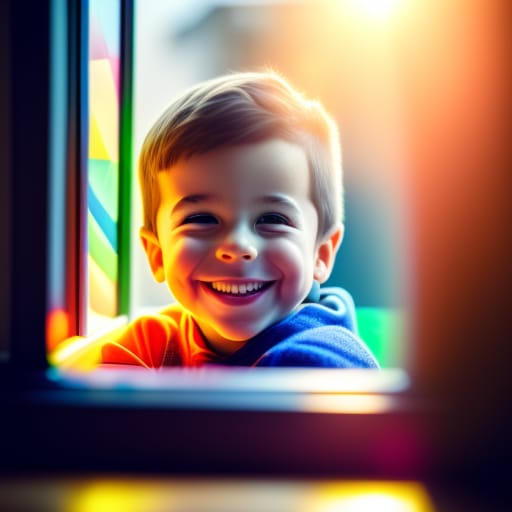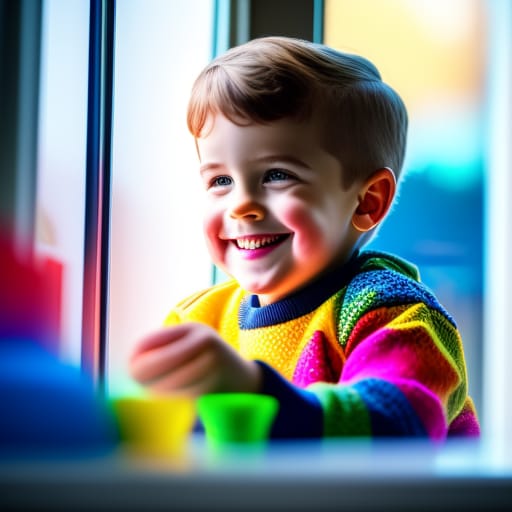Science. It’s all around us. From the sun that rises each morning to the devices we use to communicate, science helps explain how the world works. As children grow and explore their environments, nurturing their natural curiosity about the science behind everyday phenomena helps strengthen critical thinking and problem-solving skills that will serve them throughout life.
One of the best ways to foster a love of science in preschoolers is through science kits for three year olds. With the right materials and guidance, you can turn your home into an amazing science lab bursting with discovery. Read on to learn more about the benefits of science for three year olds and get tips for choosing the best science kits to engage your little Einstein.

What Are Science Kits for Three Year Olds?
Science kits for three year olds are age-appropriate tools designed to introduce scientific concepts through hands-on exploration and play. They include materials and instructions for conducting basic experiments that allow young children to explore principles of science, technology, engineering and math (STEM).
There are several types of science kits suitable for three year olds:
- Chemistry kits – Contain materials for simple chemistry experiments like creating bubbles or making slime. Teach basics like mixing and reactions.
- Physics kits – Use simple machines, gears, levers, etc. to demonstrate principles like gravity, magnetism, and energy.
- Water science kits – Allow kids to play with pipettes, vials, water wheels, etc., and observe cause and effect.
The key is finding science kits with safe materials and clear instructions appropriate for preschoolers. The experiments should be hands-on, and engaging, and teach foundational science concepts through play.
Benefits of Science Kits for Three Year Olds
Introducing science kits at a young age provides many developmental benefits:
- Cognitive Development – Science kits help strengthen skills like observing, comparing, problem-solving, prediction, and critical thinking.
- Motor Skills – Following instructions to conduct experiments promotes fine motor development and hand-eye coordination.
- Sensory Play – Interactive, hands-on materials appeal to the senses and encourage sensory exploration.
- Language Development – Science kits introduce new vocabulary words and provide opportunities for describing observations.
- Social Skills – Collaborating on science activities is a natural way to learn sharing, turn-taking, and teamwork.
- Emotional Development – Achieving success with experiments builds confidence, independence, and self-esteem.
Science kits make learning core academic concepts fun while also promoting crucial life skills.

How to Choose the Best Science Kits for Three Year Olds
With so many science kit options for preschoolers available, it can be tricky to determine which are developmentally appropriate and engaging. Here are tips for choosing the best science kits:
- Verify age-appropriateness – Make sure all materials and activities are suitable for three year olds.
- Assess safety – Avoid any choking hazards or chemicals that could be dangerous.
- Consider educational value – Look for kits designed by educators or experts to teach foundational concepts.
- Evaluate fun and engagement – Seek lots of hands-on materials, vivid colors, and cause and effect experiments.
- Read parent reviews – Get a sense of real experiences with the kits from other parents.
- Check awards and certifications – Look for seals from organizations like STEM.org.
- Learn about replacement policies – In case materials get lost or break, replacement parts should be available.
Choosing science kits that are accessible, safe, and fun will ensure your preschooler stays engaged while still learning.
How to Use Science Kits for Three Year Olds
Once you’ve selected an appropriate science kit, it’s time for the fun part – using it! Here are tips for getting the most out of science kits with your three year old:
- Supervise closely – Remain actively involved to monitor safety and offer guidance.
- Follow instructions – Do each experiment step-by-step as directed.
- Encourage exploration – Allow time for free play and investigation.
- Ask open-ended questions – “What do you notice happening? Why did that change?”
- Connect learning – Point out how the science applies to everyday situations.
With active participation and an inquisitive attitude, your child will gain important critical thinking skills from science kits while having a blast!
Top Science Kits for Three Year Olds
From chemistry to physics, here are some of the best science kits to engage three year olds while teaching core science concepts through play:
Young Scientist Club First Science Kit
Key Activities: Crystal tree growth, color mixing, bubbles, magnets
This kit focuses on common preschooler fascinations to teach basic science principles. Materials are vibrant and sturdy. The parent guide provides explanations and extensions.
Cost: $40
Scientific Explorer My First Science Kit
Key Activities: Mixing colors, floating bubbles, sensory matching cards
A wide variety of materials allows for open-ended exploration. Introduces science vocabulary through guided play. Replacement parts available.
Cost: $25
Green Kid Crafts Science Box
Key Activities: Rainbow scribbling, erupting colors, glow in the dark constellations
Combines art and science concepts with unique materials. A new themed kit each month expands learning. Subscription-based.
Cost: $22/month with subscription
Little Labs Ooey Gooey Science Kit
Key Activities: Making slime, play dough, flubber, foam, bubbles
Perfect for kids who love messy hands-on play. Enhances fine motor skills while teaching properties of matter. Materials include an apron.
Cost: $35
SmartLab Toys Splash Lab
Key Activities: Pipetting water, channel construction, water wheels, hydraulics
Introduces early physics concepts through water play. Enhances hand-eye coordination. Quality components are made to withstand regular use.
Cost: $30
With the right science kit, you can instill a lifelong love of STEM learning through interactive play. Use the experiments as jumping-off points for curiosity and investigation. Discuss observations and how science connects with everyday phenomena. Make it fun by getting hands-on together!
Science Experiments Inspire Preschoolers’ Sense of Wonder
Introducing science kits at an early age lays the foundation for a lifelong interest in STEM fields. With the right tools and guidance, parents can nurture children’s innate curiosity to help them better understand and explore the amazing world around them. Safety-tested kits designed for preschoolers make scientific discovery accessible, engaging, and most importantly – fun!
So pull out those pipettes, magnets, and microscopes and let the learning begin. By making science a joyful experience early on, we can equip the innovators of tomorrow with the knowledge, passion, and confidence to achieve their dreams. The next scientific breakthrough could very well start with the erupting colors, sensory materials, and wonder ignited through your little one’s first science kit.

Frequently Asked Questions
What are the best science kits for three year olds?
Some of the best science kits for three year olds include the Young Scientist Club First Science Kit, Scientific Explorer My First Science Kit, Green Kid Crafts Science Box, Little Labs Ooey Gooey Science Kit, and SmartLab Toys Splash Lab. Focus on kits with age-appropriate materials and instructions that teach core science concepts through hands-on play.
What types of science experiments are suitable for a 3 year old?
Simple science experiments with materials like bubbles, play dough, colors, water, sensory items, magnets, and basic machines are suitable for three year olds. Avoid any experiments involving heat, sharp objects, or chemicals that could be dangerous if ingested.
How can science kits help a preschooler’s development?
Science kits support cognitive, motor, sensory, language, emotional, and social development in preschoolers. Following instructions promotes focus and fine motor skills. Achieving observations enhances critical thinking and confidence. Describing results builds vocabulary.
What safety tips should I follow when using science kits with a 3 year old?
Always supervise closely, read instructions thoroughly, avoid choking hazards, keep hazardous chemicals out of reach, ensure proper protective gear like goggles and aprons, and assist with any steps requiring cutting or heat. Only do age-appropriate experiments.
How can I get my 3 year old interested in science?
Make it fun and hands-on! Conduct simple experiments together like blowing bubbles, mixing colors, floating objects in water, building structures, or planting seeds. Ask open-ended questions and let them take the lead in playful investigation and problem-solving. Praise effort and engagement.
Where can I find more science activities for preschoolers?
Check out preschooler science websites, blogs, YouTube channels, and social media accounts from sources like Khan Academy Kids, Little Bins for Little Hands, Pretend Play Science, Science Sparks, and The Science Kiddo. Many share free activities using common household items.
What are the best educational toys for a 3 year old interested in science?
Look for STEM toys like magnifying glasses, magnet blocks, gears, ramps, microscopes, sorting and stacking toys, scales, sensory materials, engineering sets, nature exploration tools, and anything that allows for creative problem-solving like puzzles or pattern blocks.
Let me know if you would like me to modify or expand upon any of the FAQs. I aimed to incorporate relevant LSI keywords in a natural way within each question and answer.